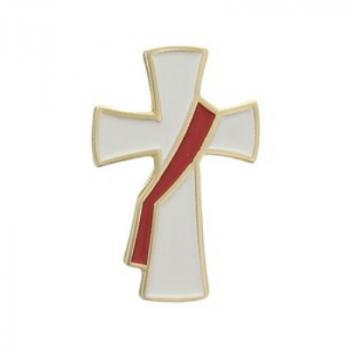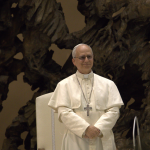A deacon writes:
Knowing that you have posted many discussions about diaconate-related questions, I have a question about transitional deacons.
I was having a chat with my pastor yesterday morning, over a cup of coffee, about the plight of a transitional deacon who might possibly not be ordained to the priesthood. I asked if he would remain a deacon forever, or if there were some time limitation associated with his diaconate ordination.
My thought was, once ordained a deacon, there is an indelible mark on the soul that never goes away. In other words, once a deacon, always a deacon.
He said he didn’t believe that was the case. He went on further to say since the ordination of a deacon does not involve anointing with Chrism, it was not permanent in the same way as a priestly ordination. I was not in agreement with that statement. At that point I politely ended the discussion, knowing that a permanent deacon was also not anointed with Chrism in the same way a priest is, but yet I believe the ordination of a permanent deacon is permanent.
I was just wondering if you have previously posted anything related to this subject, or if “Triple D” may have provided some insight.
Well, as it happens, I don’t think I have posted anything on that.
My first reaction: ordination isn’t milk; it doesn’t have an expiration date.
My second reaction: a deacon is a deacon is a deacon. There is no sacramental or theological difference between a “permanent” deacon and a “transitional” deacon. We are exactly the same.
For a more detailed explanation, I turned to the sagacious “Triple D,” my good friend and mentor Deacon Bill Ditewig, Ph.D. (Deacon Doctor Ditewig).
He kindly wrote back the following:
1) Theologically and sacramentally, there is no such thing as a “transitional” deacon on the one hand and a “permanent” deacon on the other. All ordinations, to deacon, presbyter, and bishop, are permanent in their effects. While in everyday speech it can be convenient to refer to a seminarian-deacon as a “transitional” deacon, such a descriptor is theologically inaccurate. All deacons (presbyters, bishops) are PERMANENT in effect.
2) The rites of ordination as deacon are identical, whether the ordinand is in the seminary or not. The only ritual difference is that unmarried ordinands (whether in the seminary or not) make a promise of celibacy. There are not TWO rites, one to be used for seminarians and another to be used by those not in the seminary.
3) The theological and canonical effects of diaconal ordination are identical. By ordination, one enters the clerical state. By ordination, the new deacon is incardinated into a particular church (diocese) or religious institute.
4) A question was raised over the fact that, while sacred Chrism is used to anoint the hands of the newly-ordained presbyter, it is NOT used during diaconal ordination. This led to a question whether the ordination of the deacon was as “permanent” or as “sacramentally significant” as the ordination of a presbyter. “Consecration” involves the invocation of the Holy Spirit, which takes place during ordinations to all three orders. While “consecration” frequently involves the use of Chrism, that is not always the case. Obviously, for example, we do not use Chrism during the consecration of the elements of bread and wine during Mass! The bottom line here is that, in Latin, the rites of ordination to all three orders have historically used both the words “ordinatio” and “consecratio” — and all ordinations involve an epiclesis, an invocation for the Holy Spirit upon the ordinands. Therefore, as stated above, ALL ordinations are permanent.
5) So, what would happen if a seminarian who has been ordained a deacon decides not to continue to presbyteral ordination, or if the seminary or bishop decides he should not continue? The process is identical for all deacons.
a) The seminarian-deacon may discuss with his bishop about taking an assignment as a deacon. I once knew a wonderful priest who struggled with this decision when he was a seminarian. So, the bishop assigned him to parish as a deacon for an indefinite period of time. After four or five years of service as a deacon, the man decided to continue to presbyterate and did so. He always maintained that his years of service as a “permanent” deacon was a powerful part of his life’s discernment process.
b) If the seminarian-deacon and the bishop decide that he should not continue in ordained ministry, the Holy See is petitioned by the deacon for a decree returning him to the lay state (remember, he entered the clerical state upon ordination as a deacon). He also petitions to be released from his promise of celibacy. Most people do not realize this, but the promise of celibacy is attached to the diaconate, and the Latin Church seminarian would have made that promise. So he will need to obtain a release from that promise so he might eventually marry.
c) If a so-called “permanent” deacon decides to leave active ministry, then he too will petition the Holy See for a return to the lay state. If the deacon is married, that’s all he needs to obtain. If he is unmarried and has made the promise of celibacy, then he too (like the seminarian) will need to obtain a release from that promise.
In short, a deacon is a deacon is a deacon, and it’s forever.
And now you know.












